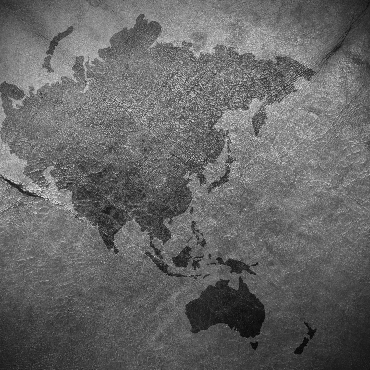KAZAKH UNREST BOLSTERS MOSCOW'S INFLUENCE, RAISES QUESTIONS FOR BEIJING
In response to recent political protests in Kazakhstan, the Russian-led Collective Security Treaty Organization (CSTO) sent troops into the Central Asian state. The success of the CSTO mission - which was designed to quell the demonstrations and reestablish the authority of sitting President Kassym-Jomart Tokayev - bolstered the organization's reputation and cast Moscow as a regional stabilizer. The People's Republic of China (PRC), meanwhile, stood on the sidelines, though China's non-participation was not for lack of interest. Quite the contrary, in fact; Kazakhstan's Foreign Minister, Mukhtar Tleuberdi, indicated that Beijing may itself have offered assistance, but the CSTO's success negated the need for involvement.
Nevertheless, the episode underscores the growing tension between the PRC's longstanding principle of non-interference and its expanding interests in its near abroad. Given Kazakhstan's border with China's Xinjiang region, the risk of regional tensions spilling over into China's periphery is a persistent concern for officials in Beijing. As a result, after the situation in Kazakhstan stabilized, China's foreign ministry pitched the idea of stepped-up law enforcement cooperation to Kazakhstan - ostensibly to head off such concerns in the future. (Financial Times, January 19, 2022; Reuters, January 10, 2022)
BIDEN'S ASIA CZAR WARNS OF "STRATEGIC SURPRISE" IN THE INDO-PACIFIC
In September, Washington laid down a notable geopolitical marker in the Indo-Pacific. At the time, President Biden, Australian Prime Minister Scott Morrison, and British Prime Minister Boris Johnson jointly announced the creation of the Australian-United Kingdom-United States (“AUKUS”) alliance, meant principally to equip Australia with nuclear-powered submarines within ten years. Earlier this month, however, Biden's "Asia czar," Kurt Campbell, raised eyebrows with comments that seemed to downplay the immediate relevance of AUKUS.
In public remarks, Campbell, the U.S. Indo-Pacific coordinator, stated: "We have a very short amount of time working with partners like Australia, like New Zealand, like Japan, like France who have an interest in the Pacific, to step up our game across the board." Campbell elaborated and warned of a possible "strategic surprise" in the region, while also admitting that Washington has "not done enough" to aid Australia and New Zealand in their efforts to head off growing Chinese influence in the region. While Campbell did not specify what he meant, reporting from Reuters reiterated longstanding concerns from U.S. government officials of China's inroads into the Pacific island of Kiribati, which lies less than 2,000 miles away from the headquarters of United States Indo-Pacific Command (USINDOPACOM) in Hawaii. (Reuters, January 6, 2022; The Guardian, January 10, 2022)
BEIJING PUSHES BORDER CLAIMS WITH BHUTAN...
In early 2020, China launched construction projects along its disputed border with Bhutan. Today, those projects continue apace, and have expanded. Comparing satellite imagery from 2020 to 2021, it is evident that China has accelerated construction in six sites along the border between the two countries. The areas of settlement-building include more than 200 structures, some of them buildings measuring two stories high. This construction will provide China with better control over strategic territory that connects regions of Bhutan, China, and India. Both nations agreed to expedite resolving their border conflicts last April within the framework of the Boundary Talks, but Bhutan has declined to speak about the boundary issues publicly. Meanwhile, China's foreign ministry has commented that the construction is "entirely for the improvement of the working and living conditions of the local people" and that it is "within China's sovereignty to carry out normal construction activities on its own territory." (Reuters, January 12, 2022)
...WHILE SEEKING TO DEESCALATE TENSIONS WITH INDIA
As tensions among China and its neighbors persist, the India-China border dispute remains particularly fraught. On January 12th and 13th, Chinese and Indian military commanders met for the fourteenth round of talks to discuss withdrawing troops from the contested border of Ladakh, specifically Hot Springs. The goal of this discussion, as China put it, was to transition from high-tension to normalized management. Since a violent clash in May of 2020, both China and India have sent thousands of troops to the border. Previous talks in October of 2021 resulted in a stalemate, as each blamed the other for their unwillingness to find a compromise. Yet even if Beijing and New Delhi can deescalate the standoff in Ladakh, the contested border will likely remain militarized along both sides of the Line of Actual Control (LAC). (Voice of America, January 12, 2022; Defense News, January 12, 2022)
INDIA GRAPPLES WITH BRAIN DRAIN, INEQUALITY
An increasing number of Indian nationals are assuming leadership positions in Silicon Valley and corporate America, from Parag Argrawal of Twitter to Sitya Nadella of Microsoft and Sundar Pichai of Alphabet. These individuals are instances of a broader trend, with a growing number of Indians relinquishing their citizenship to become naturalized Americans. But this phenomenon isn't localized to the United States, or to corporate elites; from 2014 to 2021, roughly 1 million Indians relinquished their citizenship altogether. This brain drain is indicative of broader issues that beset India's economy and governance, including overregulation and inequality. In a recent report, Oxfam India found that the number of billionaires in India increased during the COVID-19 pandemic from 102 to 142, even as 84% of households lost income. (Nikkei Asia, December 8, 2021; Oxfam India, January 16, 2022)
Want these sent to your inbox?
Subscribe

